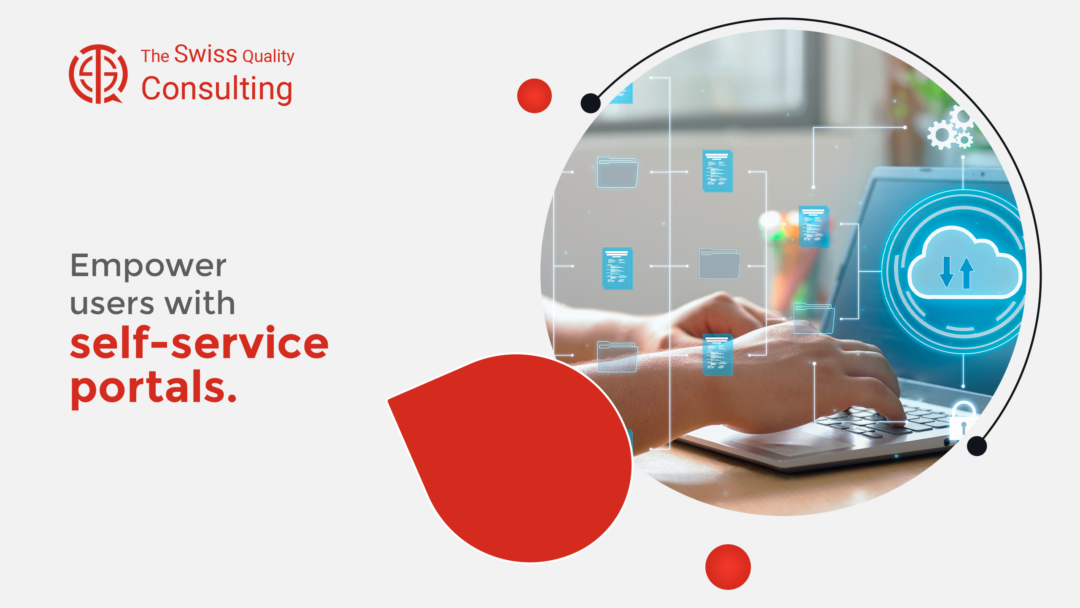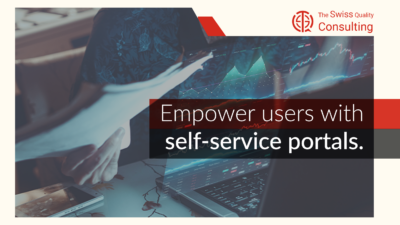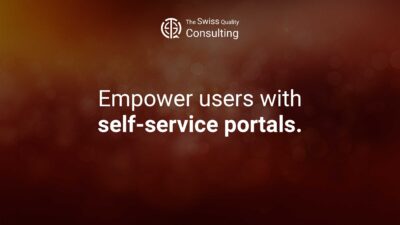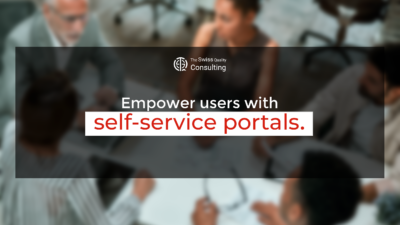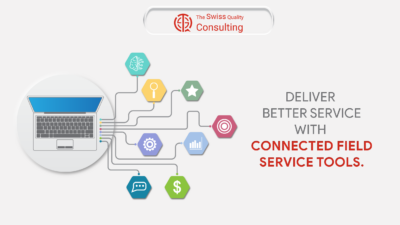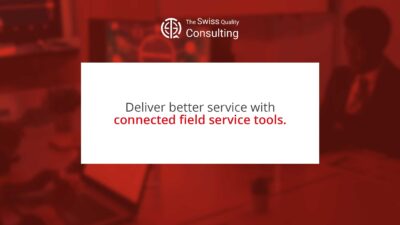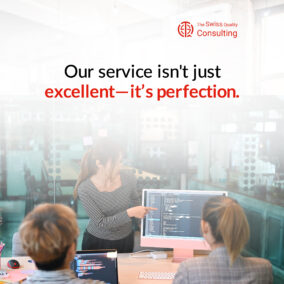Revolutionizing Customer Interaction with Self-Service Solutions
In the dynamic world of business, “Empower users with self-service portals” is a strategy that is rapidly gaining traction. For business executives, mid-level managers, and entrepreneurs, understanding the significance of self-service portals is crucial. This article explores how self-service portals are not just a technological advancement, but a strategic tool for enhancing business efficiency, customer satisfaction, and overall success.
Change Management for Implementing Self-Service Portals
Implementing self-service portals, a significant shift in the customer service paradigm, necessitates a comprehensive approach to change management. This transition from traditional, human-centric customer service methods to an autonomous, technology-driven interface is a strategic endeavor that involves multiple layers of planning and execution. Effective change management in this scenario is not just about technological deployment but also about a holistic integration of these systems into the fabric of the organization’s customer service model.
The process begins with a critical reassessment of the existing customer service strategies. This step is essential to understand the current strengths and weaknesses and to identify how self-service portals can complement and enhance the existing service offerings. Businesses need to evaluate which customer interactions can be effectively automated and how this automation will impact both the customer experience and the internal processes.
Once the areas for implementation are identified, integrating the self-service portals into the existing infrastructure becomes the next crucial step. This integration should be seamless, ensuring that the portals are easily accessible and user-friendly. The technology should be robust enough to handle various customer queries and requests, thereby reducing the workload on traditional customer service channels. This integration also involves ensuring that the backend systems, like CRM and database management, are in sync with the portals, providing a unified and efficient service experience.
Ensuring that these new systems align with the company’s broader objectives is another vital aspect of this change management process. The self-service portals should reflect the organization’s overall vision and goals, whether it’s enhancing customer satisfaction, reducing operational costs, or improving service efficiency. This alignment ensures that the implementation of the portals is not just a technological upgrade but a strategic move that supports the company’s long-term objectives.
Creating a seamless bridge between technology and user experience is perhaps the most challenging yet critical aspect of this transition. The user interface of the portals needs to be intuitive and easy to navigate. It should be designed keeping in mind the diverse customer base and their varying levels of comfort and expertise with digital interfaces. The aim is to enhance the efficiency of interactions without compromising the quality of service. This involves not just technical design but also a deep understanding of user behavior and expectations.
Finally, change management in this context also means preparing the internal team for this shift. This involves training staff to handle more complex queries that the self-service portals may not be able to resolve. It also means equipping them with the skills and tools to monitor and maintain the portals, ensuring they function smoothly and continue to meet customer needs effectively.
In summary, implementing self-service portals through effective change management is a multifaceted process that goes beyond just the adoption of new technology. It involves a strategic reevaluation of existing customer service methods, seamless technological integration, alignment with broader business goals, a focus on user experience, and internal team preparation. By addressing these elements, businesses can successfully transition to a more autonomous and efficient customer service model, one that not only meets but exceeds the evolving expectations of their customers.
The Role of Executive Coaching in Driving User Empowerment
Executive coaching services are vital in equipping leaders with the skills to implement and manage self-service portals effectively. These services help leaders develop strategies for integrating these portals into their business models, ensuring that they add value to the customer experience and align with the company’s vision. Coaching focuses on nurturing skills like technological adaptability, customer-centric thinking, and innovative problem-solving, which are essential in the age of digital transformation.
Effective Communication in the Age of Self-Service
While self-service portals offer autonomy to users, effective communication remains key. It’s crucial to educate and guide users on how to leverage these portals effectively. This involves clear instructions, intuitive design, and ongoing support to ensure users feel empowered, not alienated. Internally, ensuring that employees understand the role and benefits of these portals is equally important, as it fosters a consistent and supportive user experience.
Leveraging Generative AI in Self-Service Portals
Generative Artificial Intelligence (AI) can significantly enhance the capabilities of self-service portals. By integrating generative AI, businesses can offer personalized experiences, predictive assistance, and more sophisticated problem-solving options. This technology can analyze user data and behavior to provide tailored responses and recommendations, elevating the user experience to new heights.
Project Management for Developing User-Centric Portals
Effective project management is crucial in developing and rolling out self-service portals. This process involves careful planning, resource allocation, and timeline management to ensure the portal is user-friendly, functional, and aligns with business goals. Project management in this context also includes testing and feedback phases, where user input is sought and utilized to refine the portal, ensuring it meets the evolving needs of the users.
In conclusion, empowering users with self-service portals represents a strategic shift towards more efficient, customer-centric business models. It requires adept change management, strategic executive coaching, effective communication, the integration of generative AI, and meticulous project management. By embracing this approach, businesses can not only streamline operations but also enhance customer satisfaction, fostering stronger relationships and driving long-term success.
#SelfServicePortals, #UserEmpowerment, #BusinessStrategy, #ExecutiveCoaching, #GenerativeAI

